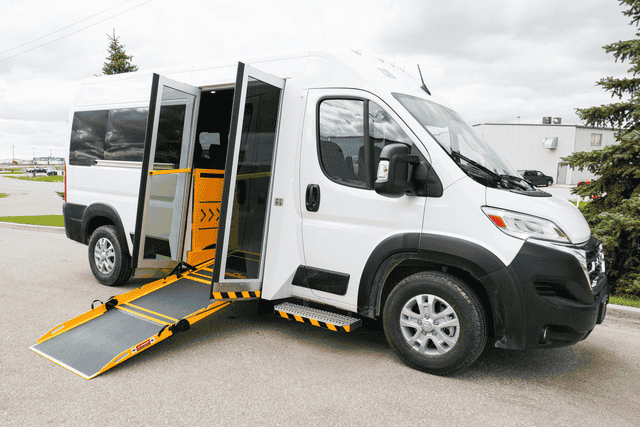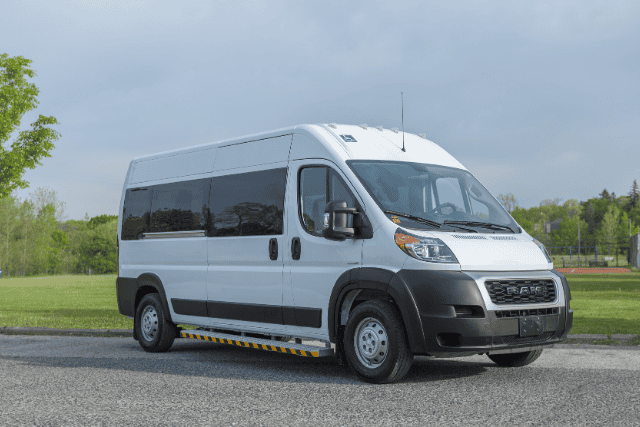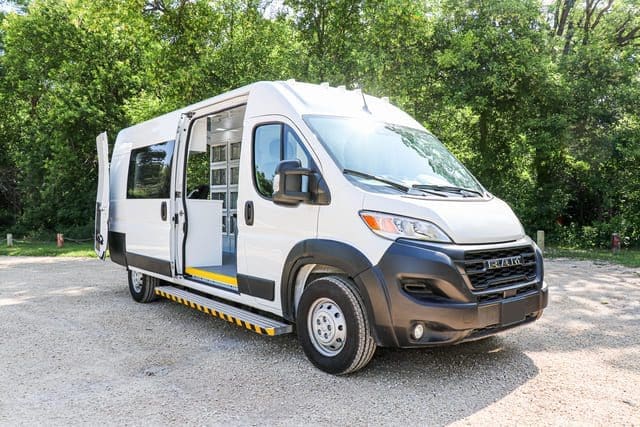Are you confident your wheelchair van maintenance routine is enough to keep it reliable? If your wheelchair accessible van has been on the road for years, you might notice it’s not running like it used to. The lift feels slower, and the brakes aren’t as smooth—small issues hinting at bigger problems.
These can add up fast, risking downtime, a costly breakdown, and even the safety of your clients. You might need a new van sooner than expected without a solid maintenance routine. Keeping up with maintenance means safer, smoother rides for your passengers and fewer headaches for your organization.
With over 10 years of experience in accessible transportation, our team at AVAN Mobility has built and maintained wheelchair vans that reduce barriers to transportation. We know the unique demands of your van, and we’re here to help you get the most out of it. While we’re not the only experts, our goal is to give you the knowledge you need to keep your van in top shape.
In this article, we’ll cover five essential wheelchair van maintenance practices. These tips will help keep your van reliable, safe, and ready for every trip, while helping you avoid costly repairs down the line.
Basic wheelchair van maintenance you might already know
Just like any other vehicle, wheelchair vans need routine maintenance to stay in good shape. Keeping up with these basics is the first step to reliable transportation.
Here are a few wheelchair van maintenance essentials you’ll want to keep up with regularly:
| Maintenance Task | What It Does |
| Tune-ups | Tune-ups help catch small issues early before they become costly repairs. |
| Fluid checks | Keeps important systems, like the brakes and transmission, working smoothly. |
| Oil changes | Keeps the engine running efficiently and helps extend its life. |
| Tire rotations | Makes tires last longer and improves handling by evening out wear. |
| Air cabin filter replacements | Improves air quality inside the van, making it more comfortable for passengers. |
| Transmission flushes | It ensures smooth shifting, which is important if the van gets a lot of heavy-duty use. |
| Windshield wiper replacements | It keeps your view clear in all weather, which is a must for safe driving. |
Pro Tip: Your owner’s manual will tell you how often each task should be done for your specific model.
Aside from these regular maintenance tasks that you should already be doing, your wheelchair van will also benefit from a few additional things. Let’s take a closer look
Five important wheelchair van maintenance practices
In this section, you’ll learn about five wheelchair van maintenance practices that you should start considering.
1. Check seat belts and wheelchair tie-downs for safety
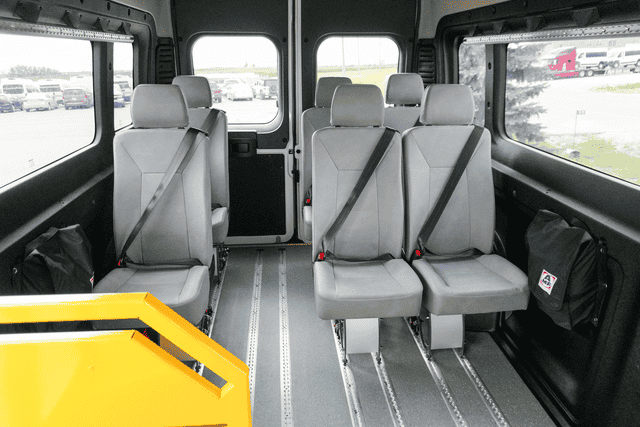
Seat belts and wheelchair tie-downs are important for safe travels in a wheelchair van. Here’s how to make sure they’re secure:
Watch for wear: Inspect each belt for signs of fraying or damage that could weaken it.
Give it a pull: Test the belts and tie-downs by pulling on them to make sure they’re firmly in place.
Replace when needed: If you spot worn or damaged straps, arrange for repairs or replacements as soon as possible. Keeping these secure is essential for passenger safety.
Why it matters: Seat belts and wheelchair tie-downs are the main support system for wheelchair users in a moving van. Any weakness could compromise safety, so regular checks help you catch issues early and keep everyone secure.
2. Get wheelchair ramps and lifts inspected once a year
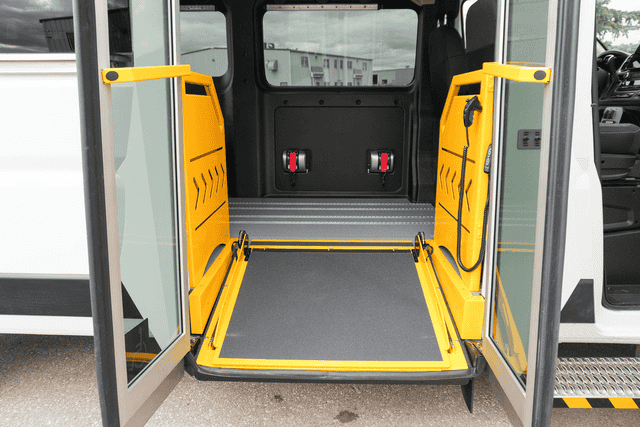
It’s important to have your wheelchair ramps and lifts checked at a service center every year.
Here’s why:
Avoid safety issues: Regular inspections help catch small problems before they become big ones. This means your ramp or lift will work when you need it most.
Accessibility: A malfunctioning ramp or lift can keep passengers from going on outings or attending important doctor appointments.
Regular inspections keep your equipment safe and reliable. When ramps and lifts work properly, it makes it easier for everyone to get where they need to go without worry. Don’t wait until something goes wrong—stay proactive with annual checks!
3. Lubricate your ramp hinges and door sides
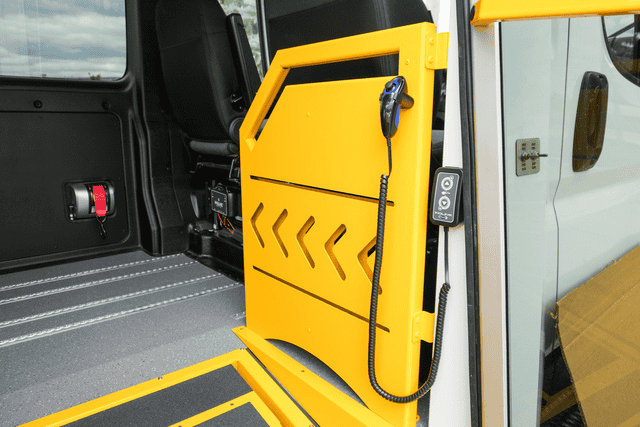
Another wheelchair van maintenance tip to keep in mind is to regularly lubricate the ramp hinges and door sides. This simple maintenance step helps everything work better and last longer.
Here’s how to do it:
Choose the right lubricant: Pick up a water-resistant silicone lubricant. This kind helps protect against rust and keeps everything moving easily.
Inspect regularly: Check the hinges on your ramp and doors every few weeks. Look for signs of dryness or stiffness.
Apply when needed: If the hinges look dry, just add a small amount of lubricant. This will make a big difference in how easily your ramp folds and your doors open.
Lubricated hinges make sure your ramp and doors work without a hitch. This reduces the chances of extra wear and tear and will help prevent future costly repairs.
4. Know how to use your backup systems
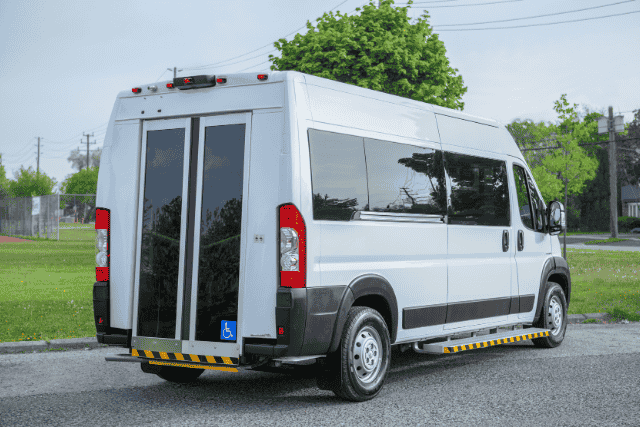
Owning a wheelchair van means you should be ready for any unexpected issues. That’s where backup systems come in handy. They ensure you can still operate your van smoothly, even when something goes wrong.
Here’s what you need to do:
Familiarize yourself with the backup features: When you get your wheelchair van, ask about any backup systems available. For instance, a manual override system can let you operate the ramp by hand if it fails to work.
Learn how backup systems operate: Take the time to understand how these backup systems function. Knowing the steps to take during a malfunction will make you feel more confident.
Get assistance if needed: If you’re not sure how to use the manual systems even after the above steps, don’t hesitate to contact the dealership or manufacturer. They can give you the necessary instructions.
Understanding how backup systems work makes sure you can tackle any problems that arise, keeping everyone safe. Knowing you have a plan reduces anxiety during a crisis. You’ll feel more at ease knowing you can handle unexpected situations.
5. Don’t forget to clean your wheelchair van

Cleaning your wheelchair van is super important, even if it doesn’t seem like it at first. Keeping your van clean helps it last longer and work better.
Protect your ramp: Imagine a client trying to use the ramp, but it gets stuck because of dirt and debris. If you let junk build up, it can get stuck when you try to open and close it. Regularly cleaning around the ramp keeps it working smoothly.
Care for floor tracks: If your van has a special floor track system, like AutoFloor, sweep or vacuum it out regularly. Think of it like cleaning out a clogged sink. If you don’t do it, dirt can block the track and make it hard to use.
Keep it tidy: Most automotive owners know the feeling of looking at their sparkling clean vehicle after washing it. A clean van isn’t just nice to look at; it makes getting in and out much easier.
A clean van looks inviting. If it’s dirty, clients might hesitate to ride in it. You want your van to be a place where everyone feels comfortable, right? If you let dirt sit for too long, it can leave marks that are tough to clean later. Just like spilled juice on the carpet—clean it up right away to avoid stains!
Keep your wheelchair van running smoothly
You came here looking for wheelchair van maintenance tips to keep your van in great shape. Maybe you started noticed small signs like slower lifts, less responsive brakes, and other concerns that could impact your van’s reliability.
Now that you’ve learned some of these strategies, you can start implementing them to prevent costly repairs, improved passenger safety, and extend the lifespan of your wheelchair van.
At AVAN Mobility, we know that a well-maintained van means more freedom and fewer worries. Our vehicles are designed to support your mobility needs, and we’re here to help you every step of the way. Our team is dedicated to providing you with top-notch service and guidance to keep you on the road safely.
If you’re starting to feel like these maintenance tips might not be enough to meet your needs, it could be a good time to explore newer options. Modern wheelchair vans offer advanced safety features, better fuel efficiency, and customizable designs to make every ride smoother and more reliable.
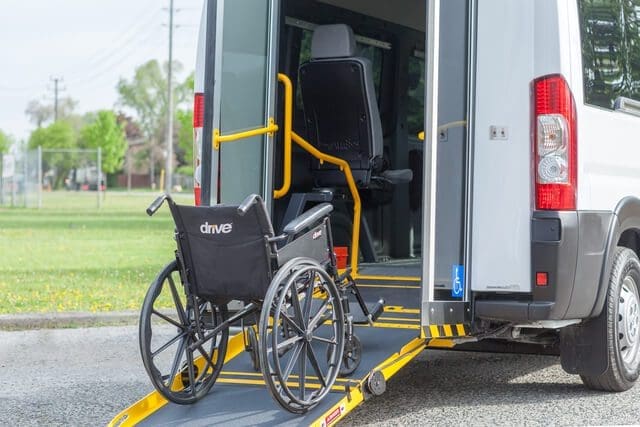
Upgrading can help you stay prepared for the future, giving you confidence and peace of mind. Click the button below to talk with one of our friendly mobility experts. They can help you explore your options and find the right solution for your needs.
Not ready to chat yet? That’s okay! We have plenty of resources available to help you learn more about your choices for wheelchair vans.
Start by checking out our article on the 11 steps to choosing a wheelchair accessible van. You’ll learn about a few key steps involved that’ll help you through the process.
After that, check out the video below on what you can expect to pay for a wheelchair van in the U.S. This information will help you better understand if your budget can support it.
